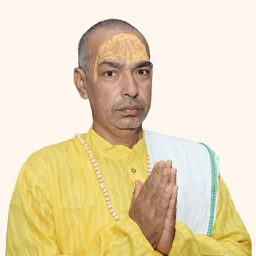Nageshwar Jyotirlinga: Location, History, Darshan and Aarti Timings and Nearest Sightseeing

Shiva, the Hindu god, is reverently represented by Jyotirlingam. "Jyotis" (meaning "radiance") and "linga" (meaning "sign") combine to form the term. The 12 jyotirlingas are Somnath in Gujarat, Mallikarjun at Srisailam, Andhra Pradesh, Mahakaleswar at Ujjan, Madhya Pradesh, Omkareshwar in Khandwa, Madhya Pradesh, Kedarnath in Himalayas, Uttarakhand, Bhimashankar in Maharashtra, Viswanath at Varanasi, Uttar Pradesh, Triambkeshwar near Nashik, Maharashtra, Vaidyanath Jyotirlinga in Deogarh, Jharkhand, Nageswar at Dwarka, Gujarat, Rameshwar at Rameswaram, Tamil Nadu and Grishneshwar near Aurangabad, Maharashtra. There are twelve sacred Jyotirlingas devoted to Lord Shiva, including the Nageshwar Jyotirlinga in the state of Gujarat.
About the Temple
Nageshwar Temple, located in Dwarka, is one of the twelve Jyotirlingas in India. It can be found on the way between Gomati Dwarka and Bait Dwarka Island along the Saurashtra coast in Gujarat. Sometimes called Nagnath Temple, the main god worshipped here is Lord Shiva, known as Nageshwar Mahadev. According to the Shiva Purana, people who pray at this Jyotirlinga are freed from all poisons, snake bites, and worldly desires.
Unlike other Nageshwar Temples, the statue, or Linga, here faces south. One of the main attractions of Nageshwar Temple is the huge 80-foot-tall statue of Lord Shiva. The temple features typical Hindu architecture. The Nageshwar Shiva Linga is made of a stone called Dwarka Shila and has small circular designs on it. It is shaped like a three-mukhi Rudraksha.
The temple is not just a religious site; it is a symbol of faith, history, and cultural heritage that has stood the test of time.
History and Story Behind the Formation of Temple
The Nageshwar Jyotirlinga Temple has a rich historical background of mythology and devotion. According to ancient texts, the temple is believed to be one of the original twelve Jyotirlingas, which are manifestations of Lord Shiva. The legend of Nageshwar is primarily narrated in the "Shiv Puran" and revolves around the tale of a demon named "Daruka" who had captured a beautiful maiden named Aditi (Supriya).
Daruka was a powerful demon who terrorized the local populace. Aditi, who was devoted to Lord Shiva. She prayed and chanted Lord Shiva’s name. In response to her prayers, Lord Shiva manifested as a Jyotirlinga and vanquished Daruka, freeing Aditi and restoring peace to the land. To commemorate this divine intervention, the Nageshwar Temple was built.
The temple is also associated with another legend involving a serpent (Naga) that worshipped Lord Shiva. It is said that the Naga was granted a boon by Lord Shiva, which led to his eternal association with this sacred place. The name "Nageshwar" itself translates to "Lord of the Serpents," highlighting this connection.
Over the centuries, the temple has undergone various renovations and restorations, especially during the reign of several dynasties in Gujarat. Today, it stands as a testament to the faith and devotion of countless devotees who have visited this holy site.
Architecture
The Nageshwar Jyotirlinga Temple's architecture combines elaborate craftsmanship with traditional Indian temple architecture. Beautifully carved pillars and elaborate sculptures portraying various deities and scenes from mythology adorn the temple complex's grand entrance.
The Jyotirlinga, an abstract image of Lord Shiva, is kept in the sanctum sanctorum. The Jyotirlinga is a cylindrical stone structure that represents the infinite nature of Lord Shiva, in contrast to other temples where idols are frequently portrayed in human form. The linga's association with Naga worship is symbolized by its black stone construction and silver serpent surrounding it.
Spiritual Significance of Nageshwar Jyotirlinga Temple
The Nageshwar Temple is also an important pilgrimage site for those seeking spiritual enlightenment. The tranquil environment encourages meditation and introspection, allowing visitors to connect deeply with their spiritual selves. The temple holds immense spiritual significance for devotees of Lord Shiva. As one of the twelve Jyotirlingas, it is considered a powerful place for worship and meditation. Devotees believe that visiting this temple can cleanse their sins and grant them salvation.
The temple is particularly known for its healing properties. Many devotees visit to seek relief from ailments and to invoke blessings for health and prosperity. The belief in the divine presence of Lord Shiva at this site enhances its spiritual aura.
Location
The Nageshwar Jyotirlinga Temple is located in Dwarka, Gujarat. As Dwarka is also the city of Lord Krishna, it has great religious significance. The temple is easily accessible, as it is only about 20 kilometers from Dwarka's city center. It is more appealing as a must-see location because of its close proximity to other historical sites in Dwarka.
The best time to visit is between November and February, and during Shivratri which is celebrated joyously.
How to Reach
By Air: The nearest airport to Nageshwar Jyotirlinga Temple is Dwarka Airport (also known as Porbandar Airport), located about 30 kilometers away from Dwarka city.
By Train: Dwarka has its own railway station, well-connected to major cities across India. The Dwarka Railway Station is about 18 kilometers from Nageshwar Temple. Local transportation is available to reach the temple.
By Road: Dwarka is well-connected by road, making it accessible from various cities in Gujarat. National Highway 8E connects Dwarka with major cities like Jamnagar and Porbandar.
Nearest Sightseeings
Dwarka is rich in historical and religious sites that complement a visit to Nageshwar Jyotirlinga Temple. Some nearby attractions include:
Dwarkadhish Temple: A prominent temple dedicated to Lord Krishna, known for its stunning architecture and spiritual significance.
Rukmini Devi Temple: Dedicated to Rukmini, the consort of Lord Krishna, this temple showcases exquisite carvings and beautiful architecture.
Bet Dwarka: An island off the coast of Dwarka believed to be the original residence of Lord Krishna.
Gopi Talav: A serene lake associated with the legends of Lord Krishna and his gopis (female devotees). It’s a peaceful spot for reflection.
Sudama Setu: A bridge connecting Dwarka to Bet Dwarka, offering picturesque views and an opportunity for boating.
Nageshwar Jyotirlinga Temple Ritual (Aarti) and Timings
Pooja Timing
Temple Opens 05:30 AM
Mangal Aarti 05:00 to 05:30 AM
Maha Bhog Maha Aarti 12:00 to 12:30 PM
Madhya Snana 04:00 to 04:30 PM
Shayan Aarti 08:30 to 09:00 PM
Temple Closes 09:00 PM
Some Rules to Follow While Visiting the Sacred Temple
- • Removing shoes outside is mandatory for all.
- • No loud noise is permissible inside the temple.
- • At Shri Nageshwar Jyotirlinga sanctum sanctorum, men have to remove their shirts and wear dhoti and women to wear Sarees for Abhishek/Pooja only. There is no dress code for darshan.
- • One can come to the temple wearing Indian cultural attire.
Conclusion
In India, the Nageshwar Jyotirlinga Temple symbolizes spirituality, faith, and history. Devotees from all walks of life are drawn to it because of its deep spiritual significance, beautiful architecture, and connection with Lord Shiva. A visit to Nageshwar Jyotirlinga Temple promises an enlightening experience. It is considered very auspicious to visit this temple to complete your 12 jyotirlinga yatra.







.jpg&w=1080&q=75)






















































































